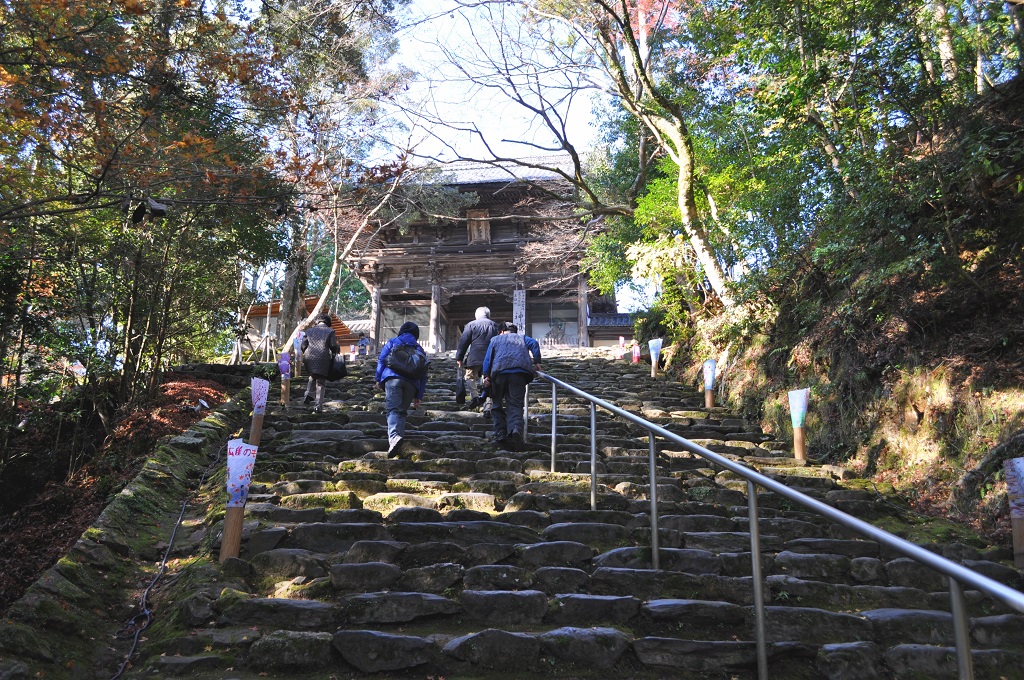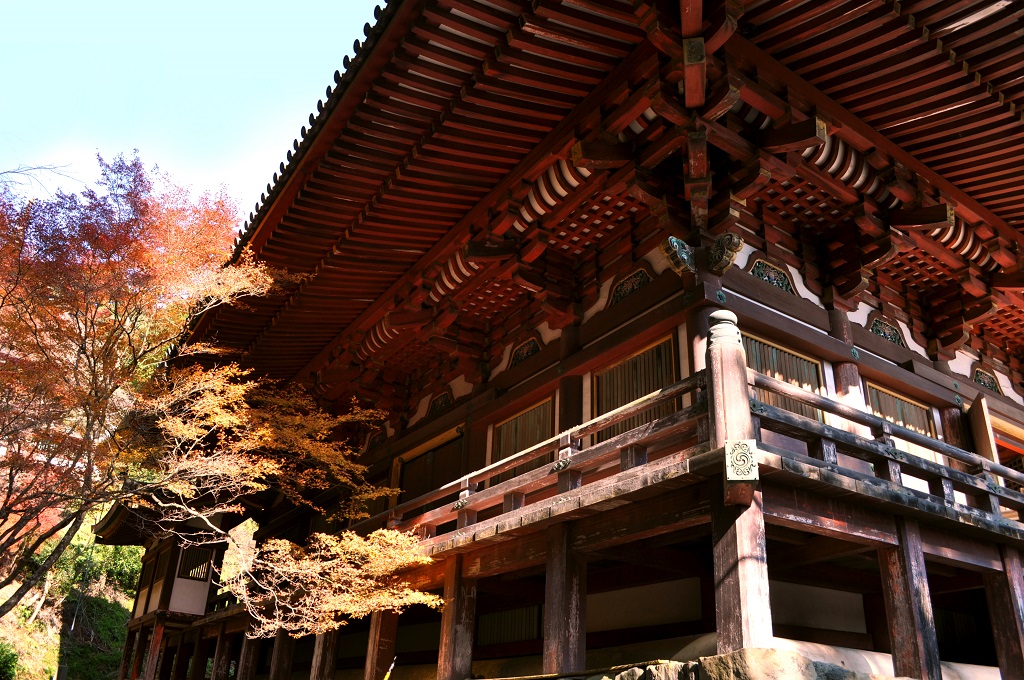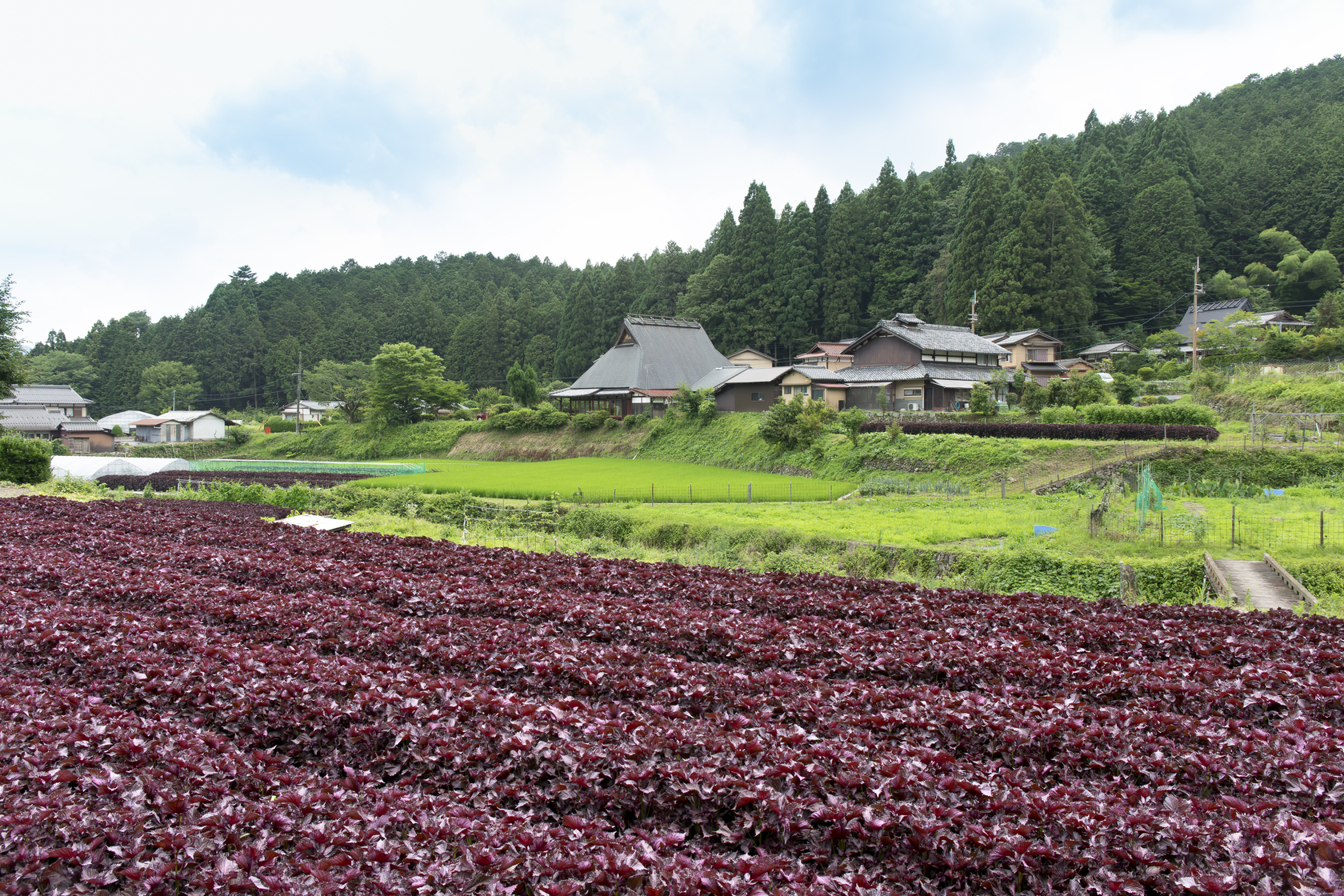
來自隱密京都的信 作者:艾比史密斯
我來自加利福尼亞,2013 年來到日本工作。我熱愛語言和鴨川沿岸的陰涼處,自 2016 年以來一直住在京都。直到今天,這座千年古城仍然讓我感到驚喜——總有一些新的東西隱藏在顯而易見的地方等待我去發現。
我參觀了位於京都市中心西北部的山區高尾山,不僅是為了欣賞那裡美麗的戶外風景(該地區非常受徒步旅行者的歡迎),也是為了欣賞它的歷史。我參觀了神護寺和西明寺,它們有著輝煌的歷史,與日本佛教和茶道的發展以及日本的「第一部漫畫」息息相關。
我們離開市中心一會兒吧。
如果您來到京都,聽到大自然在召喚您,那麼也許是時候前往高雄了。高尾是位於京都市中心西北部的一片山區,因其林間小徑而深受健行者的歡迎。附近的愛宕山是京都最高的山。清瀧川蜿蜒流過這裡的森林,這裡是日本大鯢的家園,大鯢可以長到 1.5 公尺(接近 5 英尺)長。該物種在過去 3000 萬年中基本上保持不變,看起來確實像是史前物種。沒有人能保證你會在這裡遇到一個…但要小心腳下!
高尾也是被稱為「日本第一漫畫」的誕生地——一幅幅描繪著嬉鬧的兔子和大青蛙的俏皮水墨畫卷,或許與這片世界第二大蠑螈的棲息地相得益彰。清瀧川上游,山坡樹木繁茂。這裡是體驗所謂「森林浴」的絕佳地點。親臨玉:在樹林間漫步,感受自然的體驗。 「森林浴」近年來頗為流行,被認為對心理健康大有裨益。
我們去樹林裡散步吧。
隱藏在樹林中的歷史
高尾山上有幾座古老的寺廟,雖然它們似乎隱藏在森林中,但每座寺廟都與日本歷史,特別是日本佛教的發展有著極其重要的聯繫。曾經居住在這片森林中的僧侶們遠渡重洋來到中國,帶回了新的文化和思想,包括宗教和其他方面:據說高尾山是日本最早種植茶樹的地點。
如今,高尾山的寺廟也深受京都一日遊遊客的歡迎,他們來這裡是為了在秋天觀賞鮮豔的楓樹。我在季節末期進行了這次參觀,那時樹木已經變成了銹色,但在午後的陽光下仍然閃閃發光。
距離我下車的汽車站不遠,有三百五十級石階通往山腰,山腰上點綴著斑駁的樹影。
這將會是一次有點艱難的旅程。

沿著小路,甚至還有幾家麵館,顧客們坐在樹叢中的凳子上,享用熱氣騰騰的烏龍麵。再往前走,階梯的頂端就是 神護寺.
追尋歷史人物的足跡
當你穿過這裡的大門時,你就進入了古老的土地。神護寺建於西元 824 年,擁有十七件令人印象深刻的國寶。當您到達寺廟建築群的中心時,您可能會有點氣喘吁籲,但想到這座寺廟曾接待過日本佛教歷史上一些最重要的人物,您會感到謙卑。頗具影響力的僧人空海曾在中國研習佛教多年,後來回國創立了真言宗,神護寺也屬於真言宗,他在這座寺廟建築群中生活了 14 年。寺廟的寶藏之一是他的書法捲軸,每年五月才向公眾特別展出一次。走在寺廟優美的屋簷下,每個角落都有一棵樹閃耀著光芒,人們不禁會想,在空海的時代,高雄的秋天是否也很特別。


漫步穿過寺廟建築群,我得到了爬上遠端那麼多台階的回報:樹木散開,露出了整個山谷,清瀧河就在下方清晰可見,穿過楓樹和常青樹的印花布。

用川瓦試試運氣
這個地方不僅是一個美麗的觀景台。這裡也是神護寺最獨特的傳統的所在地之一,其歷史可以追溯到江戶時代(1603-1868 年)。瞭望台旁有一個小攤,出售小而輕的陶盤,或稱為 kawarake。然而,這些都不是可以帶回家的紀念品。如果您觀察寺廟中的其他遊客,您可能會有這樣的想法......人們一個接一個地拿著他們的瓦片走到瞭望台的邊緣,然後像扔飛盤一樣,盡可能地將它們扔到下面的山谷中。人們相信,每拋出一個碎片,就能同時甩掉厄運。

從 5 月 1 日到 5 日,寺廟中的國寶將展出五天,包括空海手稿、木佛像以及據說是 10 世紀幕府將軍源賴朝的精美肖像。每年 5 月 13 日至 15 日以及 10 月三天,這裡都會舉行特別開放活動,這次是參觀神護寺的寶塔和佛像。
下山,前往另一處高雄瑰寶
一旦您再次走下所有 350 級石階進入山谷,您很快就會到達另一個著名的高尾山景點:鮮紅色的指月橋。這座橋通往神護寺的鄰居西明寺。

這座較小的寺廟最初由空海的弟子智泉於天朝時代(824-834 年)建造,是神護寺的分寺。 「聖所」這個字非常適用於西明寺的寺廟場地,周圍有樹木遮蔽。最重要的是,寺廟安靜祥和。


在寺廟的主殿裡,可以近距離欣賞令人驚嘆的雕像,其中包括寺廟的主像-一尊木製佛像,由著名的鎌倉時代(1185-1333)雕塑家運慶雕刻而成。旁邊矗立著更具異國情調的千手觀音菩薩像,以及面色紅潤、兇惡的藍染明王(其名字的字面意思是「愛染」),他緊握拳頭,抑制著自己的激情。

雖然西明寺在任何季節都是一個適合坐下來放鬆的好地方,但如果您願意的話,您可以花大約 100 日元來打破寂靜。在西明寺,對於寺廟信徒來說,這是一個難得的機會,遊客可以親自敲響寺廟的鐘聲,並在山腰上發出鐘聲。
西明寺外就是一條健行步道的起點,沿著這條小徑可以沿著清瀧河谷一直延伸到京都西北部的森林。不過,您不需要成為專業的健行者就可以來體驗高尾山地區。只要坐在這座歷史悠久的山腰上的樹下,您就能感受到空氣中的不同。










